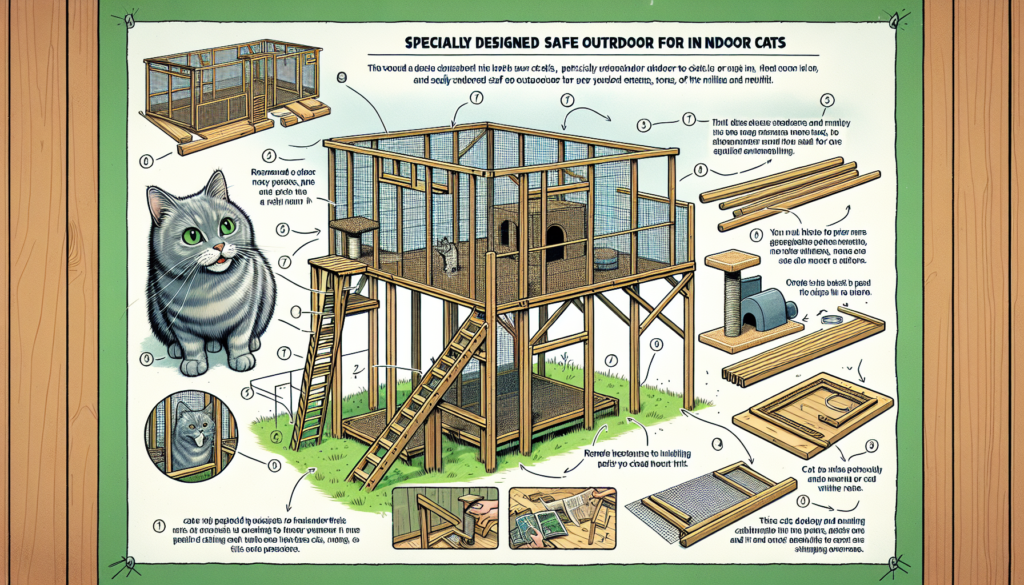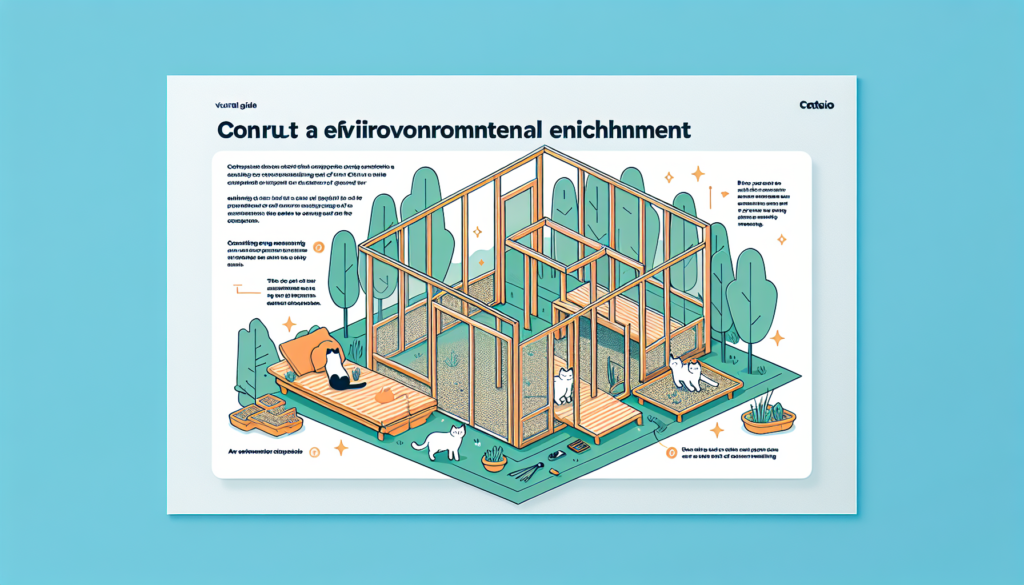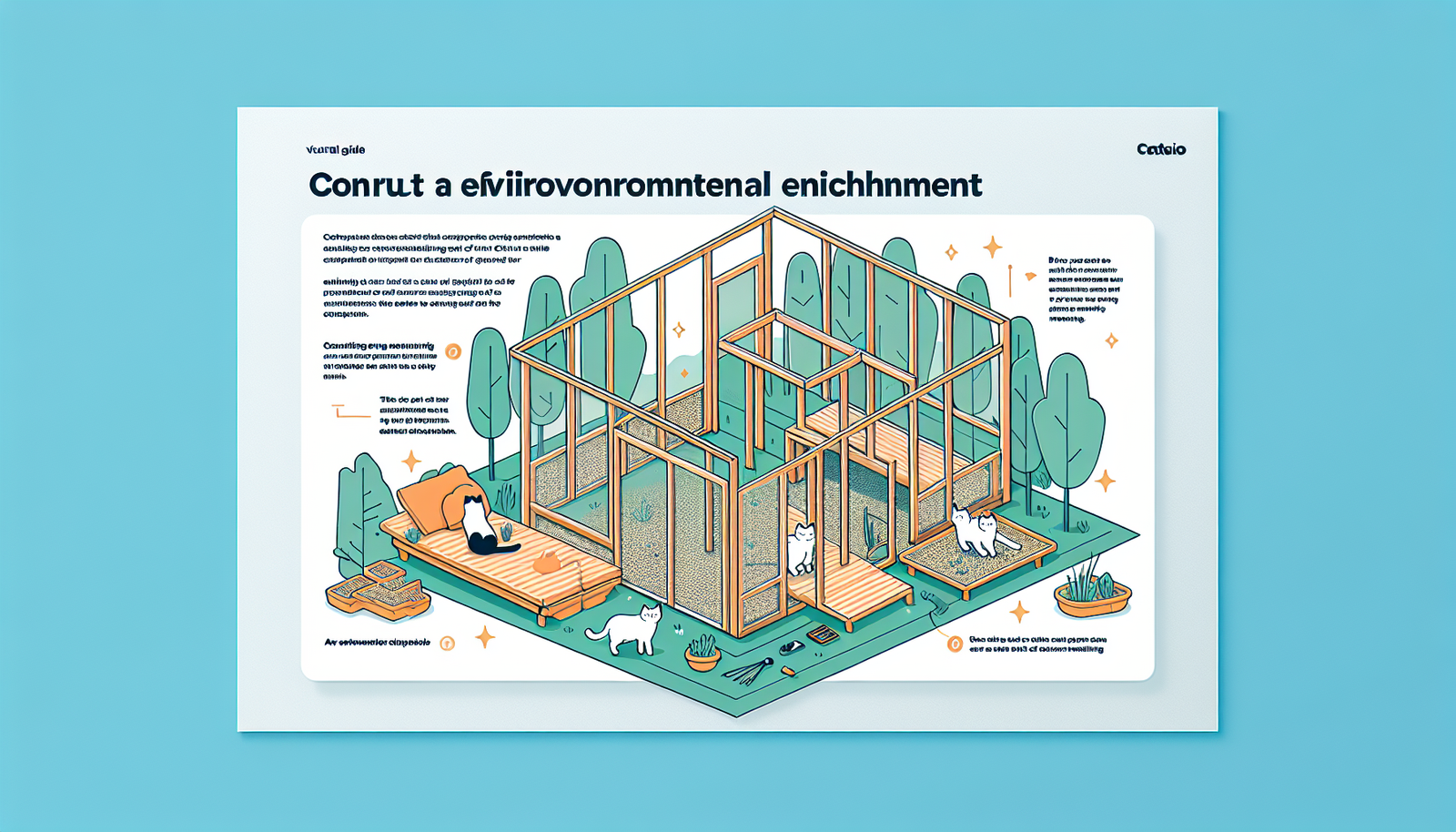If you have an indoor cat and want to provide them with a safe and stimulating outdoor experience, building a catio might be the perfect solution for you. A catio is a enclosed outdoor space that allows your feline friend to enjoy the sights and sounds of the great outdoors while remaining protected from potential dangers. In this article, you will discover 7 easy steps to build a catio for your indoor cat, ensuring that they can enjoy the best of both worlds in a secure and enriching environment.
Step 1: Assess Your Space
Evaluate your indoor space
Before you start building a catio, take a look at your indoor space. Consider the layout and size of your home to determine how much space you can allocate for the catio. Take into account any furniture, decorations, or other items that may need to be rearranged to accommodate the catio.
Consider your outdoor space
If you have an outdoor area such as a patio, deck, or balcony, consider whether it would be suitable for a catio. Assess the size and condition of the area to determine if it can be transformed into a safe and comfortable space for your cat.
Determine the size of the catio
Once you have assessed your indoor and outdoor spaces, decide on the size of the catio you want to build. Consider the number of cats you have and their activity levels. A larger catio will allow your cats more room to move around and explore, providing them with a more enriching environment.
Step 2: Research and Design
Explore catio designs
Now that you have an idea of the size and space requirements, it’s time to explore different catio designs. There are numerous options available, ranging from small window boxes to larger outdoor enclosures. Look for designs that suit your space and meet your cat’s needs for safety, comfort, and entertainment.
Decide on the catio location
Based on your research and space assessment, choose the location for your catio. It could be a window, a balcony, a porch, or any outdoor space that can be enclosed. Consider factors such as sunlight exposure, accessibility, and ease of supervision when deciding on the location.
Consider safety features
Safety should be a top priority when building a catio. Look for designs that incorporate features such as secure doors, strong materials, and mesh or wire fencing to prevent cats from escaping or predators from entering. Additionally, consider adding escape-proof screens or covering any gaps to ensure your cat’s safety.

Step 3: Gather Materials and Tools
Make a shopping list
Before starting the construction, make a shopping list of all the materials you will need. This may include lumber, screws, mesh or wire, hinges, and other hardware. Take accurate measurements to ensure you purchase the right amount of materials for your project.
Choose appropriate materials
Select materials that are sturdy and can withstand outdoor elements. Pressure-treated wood or weather-resistant materials are recommended for the frame and walls. For the mesh or wire, choose a small gauge size to prevent cats from squeezing through.
Collect necessary tools
Make sure you have all the necessary tools to build your catio. This may include a saw, drill, screws, a stapler, wire cutters, and measuring tools. Having the right tools on hand will make the construction process smoother and more efficient.
Step 4: Build the Enclosure
Construct the frame
Start by building the frame of the catio. Use the lumber and screws to create the structure according to your chosen design. Ensure that the frame is sturdy and level, as it will provide the backbone for the entire enclosure.
Install the walls
Once the frame is complete, attach the walls to the structure. Cut your chosen mesh or wire material to fit the walls and secure it with staples or screws. Make sure the walls are securely fastened to keep your cats safe and contained within the enclosure.
Add a secure roof
To protect your cats from the elements, add a secure roof to the catio. Use weather-resistant materials and ensure that it is properly attached to the frame. This will provide shade and protection from rain or snow, allowing your cats to enjoy the catio in various weather conditions.

Step 5: Create a Safe Entryway
Install a cat door or window insert
Create a safe and convenient entryway for your cats by installing a cat door or a window insert. This will allow your cats to access the catio whenever they please while ensuring that they remain securely indoors. Measure and select a suitable door or window insert that fits your catio design.
Add a secure latch or lock
To prevent any unexpected escapes, add a secure latch or lock to the entryway. This will give you peace of mind knowing that your cats are safe and cannot accidentally open the door or window. Choose a latch or lock that is durable and easy to operate.
Consider additional security measures
Depending on your surroundings, you may want to consider additional security measures for your catio. This could include adding a secondary mesh layer on the roof to prevent any potential predators from entering or using squirrel-proofing techniques to keep other animals away.
Step 6: Provide Environmental Enrichment
Include shelves and perches
Make your catio a fun and engaging space for your cats by including shelves and perches. These elevated areas will allow your cats to climb, jump, and observe their surroundings. Install them at different heights to mimic the experience of climbing trees.
Add scratching posts or pads
To satisfy your cat’s natural instinct to scratch, incorporate scratching posts or pads within the catio. This will allow them to engage in this behavior without damaging your furniture or walls. Place them strategically throughout the enclosure, providing variety and options for your cats.
Incorporate hiding spots and toys
Create hiding spots within the catio to make it more enticing for your cats. This could include shelves with enclosed spaces or small tunnels made from PVC pipes. Additionally, provide toys and interactive elements such as catnip toys or puzzle feeders to keep your cats mentally stimulated while they enjoy their catio.
Step 7: Make It Cat-Friendly
Introduce plants
Add some greenery to your catio by introducing cat-friendly plants. Cats often enjoy nibbling on grasses, so consider planting some cat grass. Just make sure to choose non-toxic plants and ensure they are out of reach, as some plants can be harmful to cats if ingested in large quantities.
Consider a water feature
Make your catio even more appealing by incorporating a water feature. This could be a small fountain, a shallow pool, or a waterfall. Cats are naturally attracted to running water, and a water feature can provide entertainment and environmental enrichment.
Temperature and lighting considerations
Ensure that your catio is comfortable for your cats year-round. Consider installing reflective shades or UV-blocking screens to protect your cats from excessive heat during the summer months. Similarly, provide adequate lighting to mimic natural sunlight, especially if your catio is located in a shaded area.
Tips and Troubleshooting
Ensure proper ventilation
To maintain a healthy environment for your cats, ensure proper ventilation in the catio. This can be achieved by installing windows or using mesh or wire materials that allow for airflow. Good ventilation will help prevent the buildup of humidity and odors, ensuring your cats are comfortable and safe.
Prevent escape attempts
Regularly inspect the catio for any potential escape points. Cats are agile and can find ways to squeeze through small openings or weak spots. Reinforce any vulnerable areas and check for signs of wear and tear. Additionally, monitor your cats while they are in the catio to ensure they do not engage in any escape attempts.
Regular maintenance and cleaning
To keep your catio in a safe and clean condition, establish a regular maintenance and cleaning routine. Remove any debris or waste, clean the surfaces and toys, and ensure that the structure remains sturdy. Regular maintenance will not only keep your cats healthy but also prolong the lifespan of the catio.
Conclusion
Building a catio for your indoor cat is a rewarding project that provides numerous benefits. Not only does it create a safe and stimulating space for your cats, but it also allows them to experience the outdoors in a controlled environment. By following the steps outlined in this article, you can successfully build a catio that meets your cat’s needs and enhances their overall wellbeing. So, get started on creating a happy and safe space for your feline friend, and enjoy the joy and satisfaction that comes with having a catio in your home.

